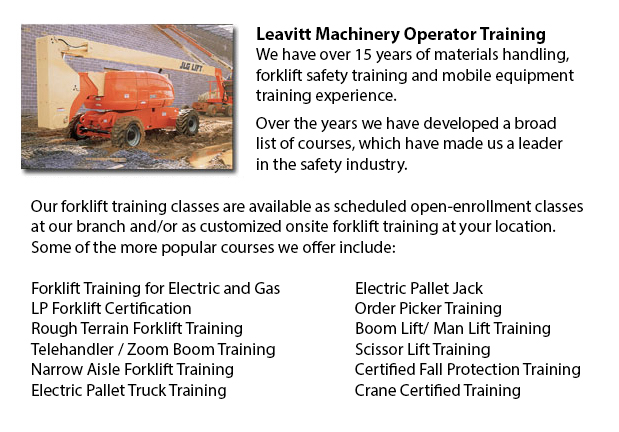
Markham Boom Lift Safey Training - Boom lifts are a kind of aerial lifting device or elevated work platform that are commonly utilized in construction, industry, and warehousing. Boom lifts can be made use of in virtually any surroundings due to their versatility.
The elevated work platform is utilized so as to allow access to heights which were otherwise unreachable making use of other means. There are dangers inherent when utilizing a boom lift device. Workers who operate them should be trained in the correct operating methods. Avoiding accidents is paramount.
The safety factors that are included in boom lift operation are included in our Boom Lift Training Programs. The course is best for those who operate self-propelled boom supported elevated work platforms and self-propelled elevated work platforms. Upon successfully finishing the course, participants would be issued a certificate by a person who is authorized to confirm completing a hands-on evaluation.
In order to help train operators in the safe utilization of elevated work platforms, industry agencies, local and federal regulators, and lift manufacturers all play a part in establishing standards and providing the necessary information. The most essential ways in preventing accidents connected to the use of elevated work platforms are the following: conducting site assessments; checking machinery; and wearing safety gear.
Key safety factors when operating Boom lifts:
Operators must observe the minimum safe approach distance (MSAD) from power lines. Voltage could arc across the air to find an easy path to ground.
To be able to maintain stability as the platform nears the ground, a telescopic boom has to be retracted prior to lowering a work platform.
People working from the platform of a Boom lift must tie off in order to guarantee their safety. lanyard and safety harness combinations must not be connected to any anchorage other than that provided by the manufacturer, never to other poles or wires. Tying off may or may not be required in scissor lifts, depending on specific employer guidelines, job risks or local regulations.
The maximum slope would be specified by the manufacturer. Workers must avoid working on a slope, whenever possible. When the slope is beyond recommended situation, the lifting device must be winched or transported over the slope. A grade can be simply measured by laying a straight edge or board of at least 3 feet on the slope. Afterward a carpenter's level could be laid on the straight edge and raising the end until it is level. The per-cent slope is attained by measuring the distance to the ground (the rise) and then dividing the rise by the length of the straight edge. Then multiply by 100.
-
Markham Forklift Certification Schools
Markham Forklift Certification Schools - Forklift Certification is mandatory in North America. Hence, forklift training programs are essential both for businesses and for people seeking jobs in industries as forklift operators. Forklift training focu... More -
Telehandler Training in Markham
Telescopic handlers normally called telehandlers for short, are a very popular piece of heavy construction equipment. They are commonly utilized in the construction and agricultural trades. These machines have maximum reaching capability and can get... More -
Markham Zoom Boom Training
Markham Zoom Boom Training - Zoom Boom Training is designed to train operators on variable reach forklifts. The objectives of the training are to impart an understanding of the physics of the machinery, and to outline the operator's tasks. This progr... More -
Markham Heavy Equipment Ticket
Markham Heavy Equipment Ticket - A heavy equipment operator will utilize different construction machinery, depending upon the nature of the task at hand. The large equipment are constructed to carry out specific tasks in the most efficient method for... More -
Markham Scissor Lift Training
Markham Scissor Lift Training - When operating a scissor lift, they must be utilized competently so as to protect the safety of the other employees inside the workplace and to protect the safety of the machine. Competent operators are trained to driv... More -
Markham Manlift Operator Training
Markham Manlift Operator Training - The aerial lift or manlift is a specialized kind of hydraulic platform which is designed to raise a person vertically giving it an alternate name of a vertical personnel lift. These machines are widely used for a m... More -
Markham Heavy Equipment Training
Markham Heavy Equipment Training - The two most common kinds of heavy equipment training are classed into the categories of machinery; equipment that is fashioned with tracks and those with rubber tires. The tracked vehicle are heavy duty equipment s... More -
Markham Forklift Safety Training
Markham Forklift Safety Training - Those wanting work in industries that utilize forklifts should undergo a forklift safety training course before becoming a certified operator of a forklift. There are various ways to go about getting forklift safety... More

Forklift Certification Markham
TOLL FREE: 1-888-254-6157
Markham, Ontario
forkliftcertificationmarkham.com
Email Us
About Us


